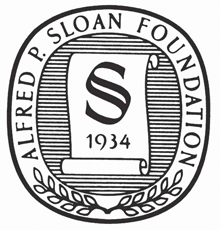If you work on amplicon based microbial community analysis this is definitely worth a read. Source: A response to “Accuracy of microbial community diversity …” by R Edgar for QIIME users – Announcements – QIIME 2 Forum It is by Greg Caporaso in response to an article by Robert Edgar. I don’t want to get …
A few weeks ago I attended a course entitled “Strategies and Techniques for Analyzing Microbial Population Structure” at the Marine Biological Laboratory in Woods Hole, along with a number of other students, postdocs and faculty engaged in the study of the microbiology of the built environment (as well as the oceans, humans, animals, plants). This excellent …
On the heels of our 5000th citation, the QIIME 2 alpha release is now live and ready for testing! The best way to see where we are with QIIME 2 is to watch my SciPy 2016 presentation on QIIME 2 (the slides are available here). In this talk I give a bottom-up description of QIIME …
This month the QIIME development group is starting the transition from prototyping to developing QIIME 2. To mark this transition and to follow up on my recent blog post, Toward QIIME 2, I put together a demo video that illustrates the end point of one of our QIIME 2 prototypes, q2d2, which you can find …
Submitted to me by Rob Knight. Announcement: Sloan Microbiology of the Built Environment Data Analysis Workshop (secrets of QIIME, VAMPS and QIITA) April 4-5, 2016 University of California, San Diego Application Deadline — February 15, 2016 — mitchellsogin@gmail.com This workshop, staffed by the developers of QIIME, VAMPS and QIITA, invite participants from the Microbiology of …
I wrote a post on the Seagrass Microbiome website yesterday about my struggles with fungal ITS sequencing data which I thought I’d share here as well in case anyone is looking to jump into the fungal fray. To summarize: changing the default method of the QIIME assign_taxonomy.py script from “UCLUST” to “blast” dramatically increased the …
The Knight lab has been working hard testing new primers for 16S rRNA amplicon production and its time to share our progress. So far, the 16S rRNA V4 region forward primer (designated 515f) has been paired with five different reverse primers (806r, 926r, 967r, 1048r, and 1391r) to amplify ribosomal RNA from bacteria, Archaea, and …
Announcement: Sloan Microbiology of the Built Environment Data Analysis Workshop (secrets of QIIME, VAMPS and QIITA) January 6-7, 2015 Application Deadline — October 30, 2014 Progress on the microbiology of the built environment, especially through amplicon studies, has been extremely rapid. However, analyzing and combining datasets has been increasingly challenging, especially as investigators use …
If you’ve been reading our posts, you are quite familiar with our efforts at characterizing the bacterial and fungal communities of the built environment. We’ve described our study design, experimental protocols, and results. One thing we may have left you wondering about, however, is the nuts and bolts behind the analyses we and other MoBe …
I’ve been remotely following the Sloan MBE meeting discussions (happening in Boulder, CO this week), and yesterday there was a lot of Twitter discussion focused on data visualization tools. How do we make sense of the millions of DNA sequences we generate from microbial ecology projects in the Built Environment? I thought I’d use this opportunity to highlight …


